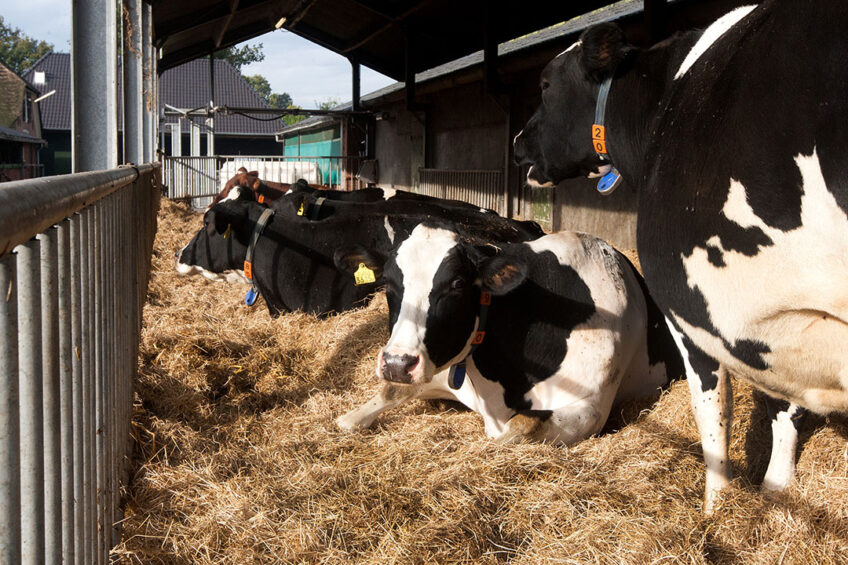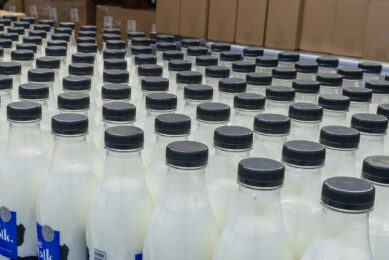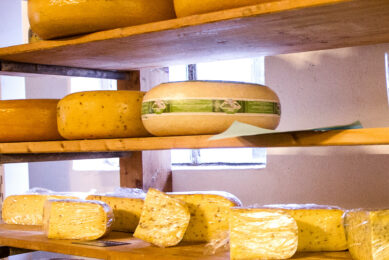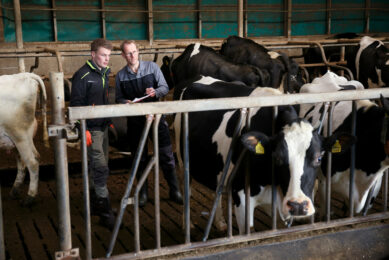Improving productivity in Russia’s dairy cow herd

Despite the expected decline of cow numbers, milk production is forecast to grow due to a steady improvement in productivity per cow.
Quality improvements and consumer confidence are also boosting demand for dairy products in Russia. A total of 8.043 million head of cows was reported in the country by Rosstat as of 1 July 2020. Despite the expected decline of cow inventories to 6.5 million head in 2021, milk production is forecast to grow to 31.8 mmt because of ongoing improvements in productivity as large, industrialised farms invest in better genetics and equipment and dual-purpose milk and meat cattle of local selection are replaced with modern highly productive dairy breeds. The average per cow yield at all types of farms was 4.642 mt in 2019, a 3.4% improvement year-on-year. At large industrialized farms, a 6.4% increase in per-cow yields was reported between January and August 2020.

Room for growth
Milk farming remains the least industrialized and the least consolidated agricultural subsector in Russia and is unequally developed throughout the country, which leaves room for further growth. Industrialised farms represent 41% of cow inventories and backyard farms 42%, however, a steady decline of rural populations has meant that inventory at backyard farms is shrinking. Small peasant farms account for 17%. The average yields per cow vary from as low as 1.802 mt per cow per year to as high as 8.591 mt.
![]() Global dairy market
Global dairy market
Overview of prices for: raw milk, dry whey, skimmed milk powder, cheese and butter, as well as global dairy trade and world prices for dairy products.
Quality advances boost consumer confidence
The growing supply of raw milk and the improved productivity of the sector is occurring in tandem with quality improvement in the increasingly transparent market, boosting consumer confidence and demand. Quality advances are, in part, a result of Russian government initiatives to trace and remove products that do not comply with regulatory requirements. Growth opportunities are constrained, however, by weak consumer purchasing power and operational expenses driven higher by the depreciation of the Rouble.
Fluid milk consumption
Following the import ban imposed in 2014, a flood of illegitimate ‘dairy’ products appeared on the market. Some products were marketed as dairy products but were in fact produced in illegal operations across the country using non-dairy ingredients like palm oil. It is reported that in 2019, the share of dairy products with false ingredients on their labels was 39%.
 Russia: Milk quality under the spotlight
Russia: Milk quality under the spotlight
A group of Russian scientists has conducted a throughout research of the Simmental cow breed genotype to discover a promising way of improving milk quality.
The Russian government introduced several measures to trace and remove the fraudulent products, including new labelling and marking rules for products with non-dairy components, an obligatory electronic veterinary certification, and a VAT increase on palm oil from 10 to 20%. Demand was restored in 2019 and 2020 for milk and particularly milk fat.
From 1 November 2019, the Mercury system of national electronic veterinary certification has become obligatory for registering and tracing all movements of dairy products from farm to table. Almost 500 companies producing falsified dairy products between January and August 2020 were identified and closed. Recent audits detect less than 1% of fake dairy in the samples.
As a result of better transparency, demand for raw milk from processing plants has increased, thereby supporting milk prices. Rosstat reported that in August 2020, the price for a litre of milk reached 24.8 Roubles (US$0.34) per kg, a historical high for August despite the Covid-19 related economic difficulties.
![]() Global dairy market
Global dairy market
Overview of prices for: raw milk, dry whey, skimmed milk powder, cheese and butter, as well as global dairy trade and world prices for dairy products.
Consumption of cheese and curd
The consumption of cheese and tvorog (curd) is forecast to reach 1.3 mmt in 2020 due to an increasing domestic supply of raw milk and growing demand. Consumption in 2021 is forecast flat. Imports of cheese and curd between January and July 2020 amounted to 168,295 mt, a 9.1% increase. Imports are forecast to decline in 2021 due to intensifying competition with cheese from domestic plants and reduced competitiveness of imported products due a depreciation of the Rouble. Belarus is the largest supplier, accounting for 84% of imports in 2019. Other suppliers shipping cheese to Russia include Serbia, Argentina, Kazakhstan, Uruguay, Switzerland, and Chile. Cheese and curd exports are forecast to grow to 30,000 mt in 2021.
Butter consumption
Butter production is forecast to reach 280,000 mt in 2021, essentially flat (0.7%) annual growth following a forecast 3.7% increase in 2020. Butter consumption in 2021 is forecast at 395,000 mt, unchanged from 2020. The market is anticipated to stabilize after significant growth of almost 8% in 2019 and almost 3% in 2020. Belarus is the largest supplier of butter to Russia, accounting for 59% of imports in 2019, followed by New Zealand.
Skimmed and whole milk powders
SMP production is forecast to grow to 90,000 mt in 2020 as imports decline 15%, creating favourable conditions for the growth of domestic production. The forecast of 92,000 mt in 2021 is based on expectations of a moderate recovery of demand from the b2b element of the food sector.
 Russia embraces new trends
Russia embraces new trends
Russian farmers find themselves in a new reality as over the past few years, the country’s environmental-protecting organisations have become a force to be reckoned with.
As a result of reduced demand because of Covid-19, total consumption of SMP is expected to decline 17% from 2019 to 146,000 mt in 2020. The forecast consumption for 2021 is 150,000 mt. SMP imports are forecast at 60,000 mt in 2021, a minor recovery from 58,000 mt anticipated in 2020. Belarus remains the largest supplier of SMP to Russia, accounting for 87% of imports.
WMP production is forecast at 65,000 mt in 2020 and is expected to remain at the same level in 2021. The industry is expected to continue processing a large portion raw milk supplies into butter/SMP and cheese, rather than use it for WMP. Imports of WMP are forecast at 36,000 mt in 2021, a 10% annual reduction following a 13% decline anticipated in 2020. Imports of WMP is expected to decline because the demand for the commodity is shrinking due to growing supply of raw milk from local industrialized farms. Belarus remains the primary supplier of WMP to Russia followed by Uruguay and New Zealand.
The information in this article has been extracted from a USDA report.
![]() Global dairy market
Global dairy market
Overview of prices for: raw milk, dry whey, skimmed milk powder, cheese and butter, as well as global dairy trade and world prices for dairy products.
Join 13,000+ subscribers
Subscribe to our newsletter to stay updated about all the need-to-know content in the dairy sector, two times a week.










